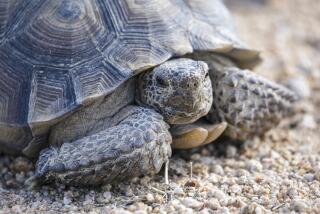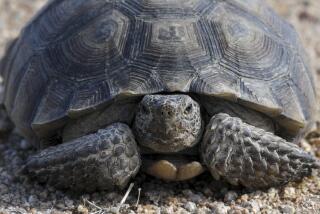Mojave rattler
[CROTALUS SCUTULATUS]
Of all the rattlesnakes in the United States, the Mojave rattler, a moderately large snake found in the deserts of southeastern California, is the most venomous. Its highly neurotoxic bite is 10 times more potent than most other rattlesnakes and packs enough venom to kill 10 adult humans. Symptoms from a bite can include shortness of breath, facial twitching, paralysis of the lower limbs and inability to speak or swallow. Untreated bites are typically fatal, and death can occur in as little as 10 minutes, usually due to abrupt respiratory cessation. As a common inhabitant of semiarid grasslands, the Mojave rattlesnake is increasingly encountered as ever-expanding suburbs push into its habitat, and people venture out to view desert wildflowers. Individual snakes range from calm to extremely excitable, with some lashing out so violently that their entire body jumps off the ground.
NATURAL HISTORY
Mojave rattlesnakes spend the day sleeping in animal burrows but come out at night to feed or mate. Their peak period of activity is in May when much of their courtship takes place. It is best to steer clear of these snakes particularly during their courtship period.
KEY CHARACTERISTICS
Growing up to 4 feet long, the Mojave rattler has dark diamond-shaped blotches on a greenish body. It also has a distinct âcoon tail,â with white and black bands
More to Read
Sign up for Essential California
The most important California stories and recommendations in your inbox every morning.
You may occasionally receive promotional content from the Los Angeles Times.










